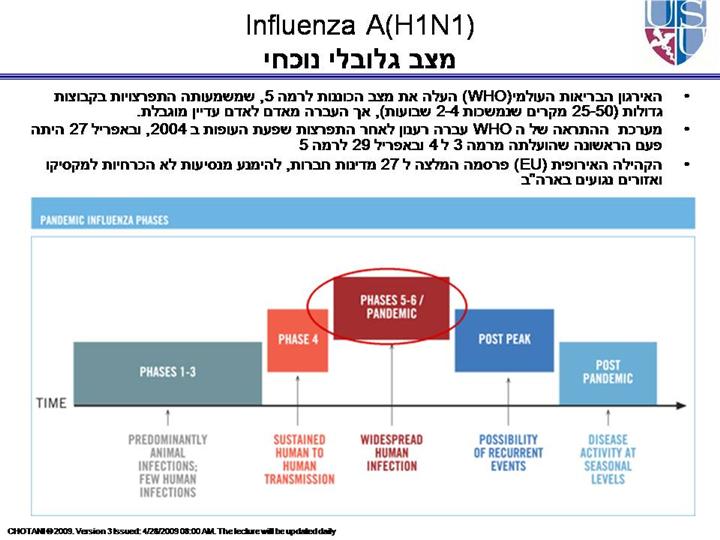| front |1 |2 |3 |4 |5 |6 |7 |8 |9 |10 |11 |12 |13 |14 |15 |16 |17 |18 |19 |20 |21 |22 |23 |24 |25 |26 |27 |28 |29 |30 |31 |32 |33 |34 |35 |36 |37 |38 |39 |40 |41 |42 |43 |44 |45 |46 |47 |48 |49 |50 |51 |52 |53 |54 |55 |56 |review |
 |
Overview of WHO’s Pandemic Alert Levels Phase 3 of the pandemic alert period is when there are human infections with a new sub-type, but there is no human-to-human spread (or at least very rare instances of spread to a close contact). At this point, the new virus subtype must be characterized rapidly to ensure early detection, notification and response of additional cases. Phase 4 may occur when there are small clusters (e.g., <25 human cases lasting <2 weeks) with limited human-to-human transmission, but spread is highly localized (which suggests the virus does not adapt well to humans). During this phase, WHO describes a variety of measures (such as targeted use of antiviral medications) aimed at containing the virus within a limited area or to delay spread to buy time to implement preparedness measures, such as vaccine development. Phase 5 may occur when there are large clusters (e.g., 25-50 cases lasting 2 to 4 weeks), but human-to-human spread is still localized. The virus may not yet be fully transmissible. At this point, it is imperative to continue efforts to contain or delay spread of the virus, to both avert a pandemic and to implement pandemic response measures. Phase 6 is when transmission to the general population has increased and is sustained, meaning there is a pandemic. All efforts to minimize the impacts of the pandemic are necessary at this time. |